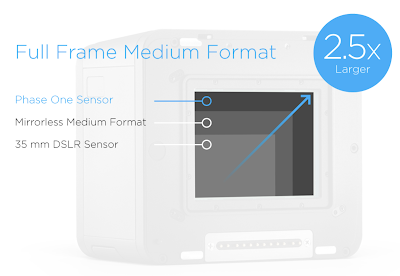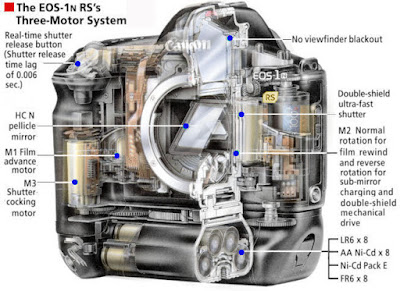The Larger the Format the Better the Image Quality
The largest astronomical telescope is the Gran Telescopio Canarias in Spain. It has an effective aperture of 10.4m in diameter. The larger the aperture, the better the resolution. Even in a post-truth world you still cannot overcome the limits imposed by physics.
This brings us to a widespread delusion amongst photo enthusiasts today. Many think that the sensor resolution on their cameras can be increased infinitely. People think that at the present rate of exponential rise in digital sensor resolution that the sky is the limit. Soon we may get smartphone sensors that reach 100MP in resolution, 35mm format sensors that reach 100TP (terapixels) etc etc ad infinitum.
But there is a problem. It is called the lens. You can increase the bandwidth of the digital component all you want but you have to increase the size of the lens to go with that. If you wanted to make use of a camera sensor with 100TP in resolution, you might need to mount a lens with a nice 10-metre aperture diameter to go with it.
We are rapidly reaching a point where the bottleneck to image resolution is no longer the digital sensor but the optical resolution of the lens. The digital world is about to collide with the brick wall of analogue physical limits. This is true not only of phone camera sensors but of all sensor format sizes. The format size dictates much harder limits that are more difficult to overcome.
 |
| We are rapidly approaching the point where the bottleneck to improving image quality will no longer be the sensor |
Now there are still meaningful aspects of sensor performance other than resolution. That means there is still room for improvement in sensor performance metrics beyond brute resolution. There is noise suppression and improvement in dynamic range. However signal/noise ratio is limited by amount of light the system can collect and this in turn by the maximum aperture diameter i.e. the format size. At a certain point you can reduce the pixel size but that does not improve the signal-noise ratio because there are only a finite number of photons hitting each pixel.
Fanboys living in a post-truth fantasy-world will say: optics can be advanced too so bring on the 100TP phone camera sensor. Indeed, the science of optics does progress but at a slower pace than digital electronics. If it were truly possible to get a phone camera lens to resolve as highly as the Gran Telescopio Canarias, they would not have spent millions of dollars in making such a beast of a telescope.
In short, while you can squeeze ever better performance out of smaller sensor-lens format combinations, you ultimately hit hard against a brick wall of physical limits that become ever more difficult to overcome. In the end, you end up having to increase the format size to get better image quality.



Comments
Post a Comment